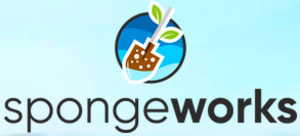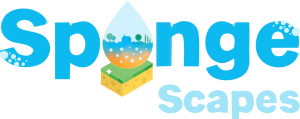- Climate change
- Water, urban planning and sustainable development
- Hydromorphology
- Nature-Based Solutions (NBS)
Natural water retention measures or ‘sponge measures’: working with nature to manage water better

Words from

NBS, NWRM, sponge measures: what's that?
A hydrological context under pressure
In a context of climate change, water management is a key issue. On the one hand, droughts are becoming more frequent and intense, damaging natural environments and domestic, industrial and agricultural uses, as well as quality of life. On the other hand, extreme rainfall events are increasing, causing flooding and soil degradation, destroying infrastructure and endangering property and people.
Faced with these challenges, traditional technical solutions have shown their limitations. Indeed, the approach of quickly channelling, draining or discharging water into watercourses to protect against excess has contributed to worsening hydrological imbalances by preventing water from supporting ecosystems or infiltrating and recharging aquifers.
Definition: what are NWRM?
It is in this context that natural water retention measures (NWRM) or ‘sponge measures’ are emerging as a relevant alternative or complement to traditional grey infrastructure. These measures consist of restoring or reinforcing the natural processes of the water cycle, drawing on the functions of soils, vegetation, watercourses and wetlands. The aim is to give nature back its place so that it can once again play its role as a hydraulic regulator.
In concrete terms, NWRM measures aim to retain water where it falls, in particular by promoting its infiltration into the soil and its use by plants, slowing its flow, and temporarily storing it in the landscape, ultimately improving the overall resilience of the land.
A variety of solutions depending on the environment
There are many solutions, which vary depending on rural, urban or natural contexts, although many solutions, such as de-impermeabilisation or the use of vegetation, can be applied anywhere.
In agricultural environments, for example, practices such as agroforestry, maintaining or planting hedges, introducing grass strips or using conservation tillage techniques can be implemented. All these actions help to improve soil structure, limit erosion and increase the water retention capacity of plots.
In wetlands and river environments, NREMs can consist of restoring peatlands, reconnecting flood expansion areas, or renaturing sections of rivers that had been diverted or canalised. These interventions not only reduce downstream flooding, but also restore natural habitats rich in biodiversity.
In cities, the principles are similar, but adapted to the urban context: green roofs, landscaped swales, rain gardens or trees, and more broadly, the de-impermeabilisation of surfaces. The aim is to prevent water from immediately running off into sewers or rivers, and to encourage its absorption or use by vegetation where it falls.
Multiple and sustainable benefits
From a hydrological perspective, these measures offer numerous benefits: they help to reduce flood peaks, limit erosion, recharge groundwater reserves and sustain low water levels.
But beyond water management alone, they offer major co-benefits: improved water quality through natural filtration, creation of habitats for fauna and flora, and improved living conditions.
A concrete example: OiEau participates in the Spongeworks project
The SpongeWorks (2024–2028) project, funded by the Horizon Europe programme, is an illustrative example of the large-scale implementation of natural water retention measures.
SpongeWorks aims to enhance the capacity of soils, surface waters and aquifers to retain and release water gradually, like a sponge, in order to increase resilience to floods and droughts.
The project includes demonstrators in three European basins: the Lèze in France, the Pénée in Greece, and the Vecht between the Netherlands and Germany.
The International Office for Water, in conjunction with the Syndicat Mixte Interdépartemental de la Vallée de la Lèze (SMIVAL), is leading the actions in the Lèze basin. The aim is to implement a large number of ‘sponge measures’ and monitor their effects on soil and water quality.
The IOW also runs a knowledge platform on sponge measures and landscapes to share feedback, capitalise on methodologies, model the impacts of measures and facilitate the transition to the European level.
In addition, OiEau organises consultation workshops (with farmers, local authorities and scientists) to ensure social acceptance of the measures, raise awareness and monitor soil and water quality in particular.
The project ultimately aims to test around 19 sponge measures on 4,000 hectares of land and 47 km of waterways, which gives an idea of the scale of the initiative.
Prospects and development
The outlook for NWRM is promising. More and more stakeholders in the water sector are recognising their usefulness, particularly in the context of climate change adaptation policies. Dedicated funding is being developed, such as that provided by the Common Agricultural Policy and the European Green Deal. Scientific research is also taking a closer look at these mechanisms in order to better quantify their effects, limitations and long-term performance.
Obstacles still to be overcome
However, challenges remain. Social and economic acceptability is not always guaranteed, particularly when it comes to changing established practices or intervening on private land. The effects of NREMs can also be difficult to measure in the short term and may vary over time, which sometimes complicates their promotion. Finally, their implementation often requires coordination between multiple actors at the watershed level, which necessitates appropriate governance tools.
Natural water retention measures are a smart, systemic and resilient approach to water management. Rather than fighting the elements, they invite us to work with them, giving nature back the opportunity to play its role as a regulator.



